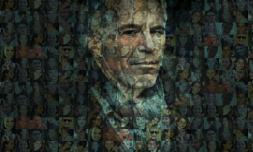Burning Man organisers are trying to create a digitally accessible event while remaining true to its anti-corporate routes. It’s a tough balancing act.
If you’ve never been to Burning Man, the annual festival that takes place in the deep Nevada desert, you probably associate it with intense dance music and low-budget Mad Max lookalikes. This interview with various partygoers by All Gas No Brakes sums it up pretty accurately.
However, despite some of the slightly unhinged behaviour that ends up online, Burning Man has become hugely popular in recent years, boasting over 78,000 attendees in 2019. Its non-profit origins and emphasis on community built events and activities makes it an anomaly of the festival circuit. Brands and advertisers aren’t allowed to sponsor anything or anyone, making it a rare gem in an otherwise heavily corporate-led industry.
All of that has been put to the test this year with the Coronavirus pandemic as organisers have struggled to keep the ship afloat without a real life event for 2020. As with some club promoters and DJ sets, the Burning Man experience will be moving online via apps this year in a rare moment of openness with tech developers that the festival would likely otherwise shy away from.
Don’t worry, corporate sponsorships still won’t be present, but this is an indication that the festival is willing to expand beyond its usual anti-establishment roots, at least during difficult times. The theme this year is ‘Multiverse’, where content creators can submit VR and interactive experiences as part of a wider project. There are eight ‘universes’ that have been finalised as main events, each being created by independent developers working in their free time. You can check out the hub of ‘universes’ on the official Burning Man website here.
What are these ‘universes’ and what do they involve?
All of them take varying approaches in emulating the virtual Burning Man experience, though we won’t be able to see them in full swing until the end of August when the ‘festivities’ begin. You can view previews though. One is called BRCvr and is a complete recreation of the Black Rock City desert that can be explored with a virtual reality headset. It looks a little like Roblox meets Gary’s Mod – take from that what you will – but it certainly is something.




















